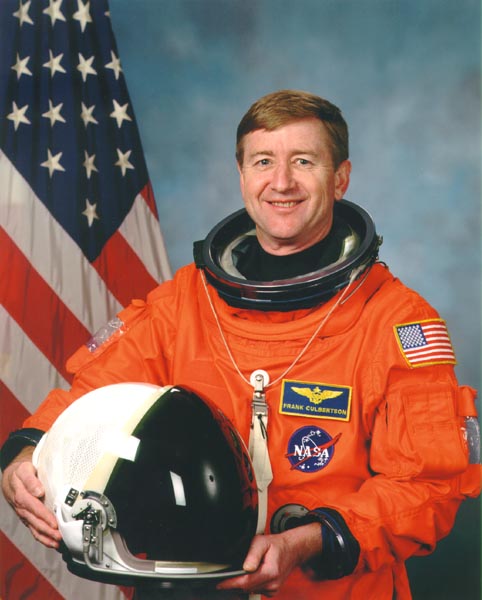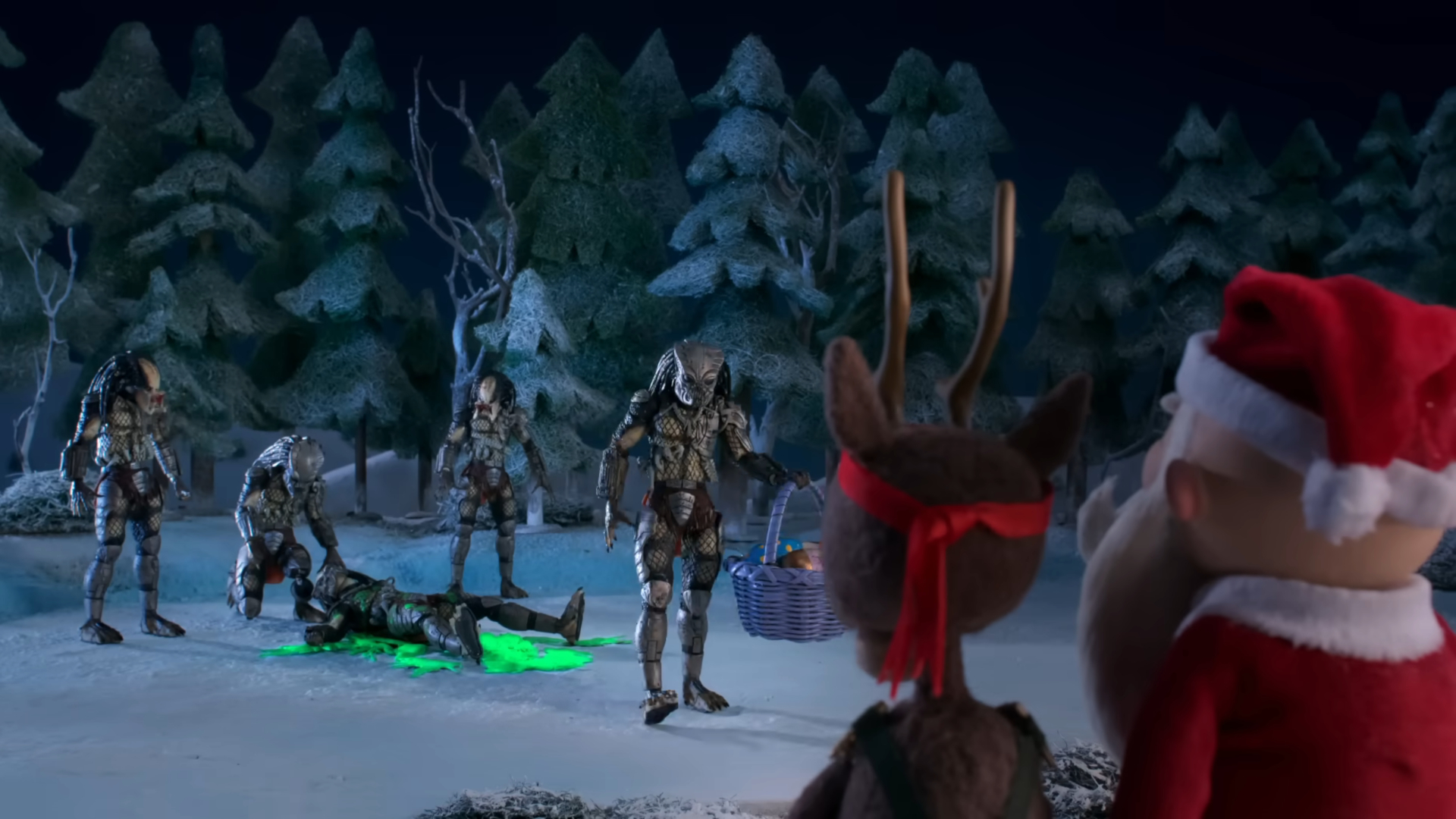Remembering 9/11: An Astronaut's Painful View From Space
Editor's note: This story originally ran on Sept. 9, 2011. We are featuring it here to mark the 18th anniversary of the terrorist attacks.
The 9/11 terrorist attacks 10 years ago this week sent shockwaves not just around the planet, but into space as well.
The only American not on Earth on that day in 2001, NASA astronaut Frank Culbertson, had a unique vantage point on the attacks. From the International Space Station, Culbertson snapped a photo of smoke streaming from the World Trade Center wreckage that day after two hijacked planes crashed into the Manhattan towers.
"I didn't know exactly what was happening, but I knew it was really bad because there was a big cloud of debris covering Manhattan," Culbertson said in a new video released by NASA for the 10th anniversary of the attacks. "That's when it really became painful because it was like seeing a wound in the side of your country, of your family, your friends."
Video: Astronaut Shares What 9/11 Looked Like from Space
Related: 9/11 Remembered in Space Photos
Overwhelming isolation
Culbertson, a retired U.S. Navy captain, was commanding the orbiting laboratory's Expedition 3 mission and was living on the outpost with Russian cosmonauts Vladimir Dezhurov and Mikhail Turin at the time.
"My crewmates have been great," Culbertson wrote in a letter published the day after the attacks. "They know it's been a tough day for me and the folks on the ground, and they've tried to be as even keeled and helpful as possible. Michael even fixed me my favorite Borscht soup for dinner," he added, referring to Turin.
Breaking space news, the latest updates on rocket launches, skywatching events and more!
Ultimately, though, the NASA astronaut couldn't help but be affected by his position as the only American in space.
Video: Astronaut Frank Culbertson Recalls 9/11 From Above
"The most overwhelming feeling being where I am is one of isolation," Culbertson wrote. "The feeling that I should be there with all of you, dealing with this, helping in some way, is overwhelming."
Culbertson was told of the event, which killed about 3,000 people, when NASA flight surgeons radioed the station.
"I had just finished a number of tasks this morning, the most time-consuming being the physical exams of all crew members," Culbertson recalled. "In a private conversation following that, the flight surgeon told me they were having a very bad day on the ground. I had no idea."
Culbertson described being "flabbergasted, then horrified" by the news. He noticed the space station was just about to pass over New England, and rushed to try to see.
"I zipped around the station until I found a window that would give me a view of NYC and grabbed the nearest camera," Culbertson wrote. "The smoke seemed to have an odd bloom to it at the base of the column that was streaming south of the city. After reading one of the news articles we just received, I believe we were looking at NY around the time of, or shortly after, the collapse of the second tower. How horrible."
Mourning a friend
Culbertson said he understood early on that the attacks would change history.
"I know that we are on the threshold (or beyond) of a terrible shift in the history of the world," he wrote. "Many things will never be the same again after September 11, 2001. Not just for the thousands and thousands of people directly affected by these horrendous acts of terrorism, but probably for all of us. We will find ourselves feeling differently about dozens of things, including probably space exploration, unfortunately."
The astronaut learned that day that his friend and U.S. Naval Academy classmate Charles "Chic" Burlingame was the pilot of American Airlines Flight 77, which struck the Pentagon.
"What a terrible loss, but I'm sure Chic was fighting bravely to the end," Culbertson wrote. "And tears don't flow the same in space."
Despite the emotional difficulty, Culbertson served out the rest of his mission successfully. After spending 129 days in space, he landed on Dec. 17, 2001, aboard the space shuttle Endeavour.
Culbertson is now retired from NASA and serves as senior vice president for human spaceflight programs at the commercial spaceflight company Orbital Sciences.
In the new video, Culbertson said he hopes the country won't forget the attacks, or the lessons they taught.
"I think it's important for people to continue to learn the lessons from this and make sure that we are in fact making ourselves a better country as a result of it, not regressing or turning inward, or changing ourselves into a society that we won't be proud to pass on to our grandchildren and great-grandchildren," Culbertson said.
Honoring the victims
In September 2001, the International Space Station was still young; its first module was launched in 1998. The outpost is now about the size of a football field and has been home to a continuous human presence for more than 10 years.
Photos: Building the International Space Station
In the years since the attacks, NASA has honored the victims in various ways.
In December 2001, the agency launched 6,000 U.S. flags aboard the space shuttle Endeavour for the families of Sept. 11 victims in New York, Washington, D.C., and Pennsylvania. That mission also flew flags recovered from the World Trade Center, Pentagon and Pennsylvania sites of the attacks.
In January 2010, NASA astronaut Mike Massimino, a native New Yorker, dedicated an American flag flown on the space shuttle Atlantis in May 2009 to the National 9/11 Memorial & Museum under construction at the ground zero site.
Even the two Mars rovers Spirit and Opportunity, currently on the Red Planet, each carry a piece of the American flag cut from debris at the World Trade Center. The flags are on dust covers built by New York City robotics firm Honeybee Robotics.
- Astronaut Frank Culbertson Reflects on Seeing 9/11 Attacks from Space
- Astronaut Dedicates Flag Flown in Space to 9/11 Victims
- NASA Commemorates 9/11 with Photos of New York from Space
You can follow Space.com senior writer Clara Moskowitz on Twitter @ClaraMoskowitz. Follow us for the latest in space science and exploration news on Twitter @Spacedotcom and on Facebook.

Clara Moskowitz is a science and space writer who joined the Space.com team in 2008 and served as Assistant Managing Editor from 2011 to 2013. Clara has a bachelor's degree in astronomy and physics from Wesleyan University, and a graduate certificate in science writing from the University of California, Santa Cruz. She covers everything from astronomy to human spaceflight and once aced a NASTAR suborbital spaceflight training program for space missions. Clara is currently Associate Editor of Scientific American. To see her latest project is, follow Clara on Twitter.

